Last week, The Daily Grindhouse was pleased to bring you an exclusive first look at never before seen behind-the-scenes photos from the set of CALIGULA, part of LA Art Gallery Century Guild’s ongoing effort to use 90+ hours of newly discovered footage to restore the film to screenwriter Gore Vidal’s original vision. Today, DG Managing Editor Preston Fassel sits down with artist, historian, and Century Guild founder Thomas Negovan– who’s personally overseeing the restoration — to discuss the backstage squabbles that gave us the versions we have, how Century Guild is tackling the restoration, and the lost and deleted sequences that might have been. Oh, and, a three-story-tall spinning wall of death may come into the picture…
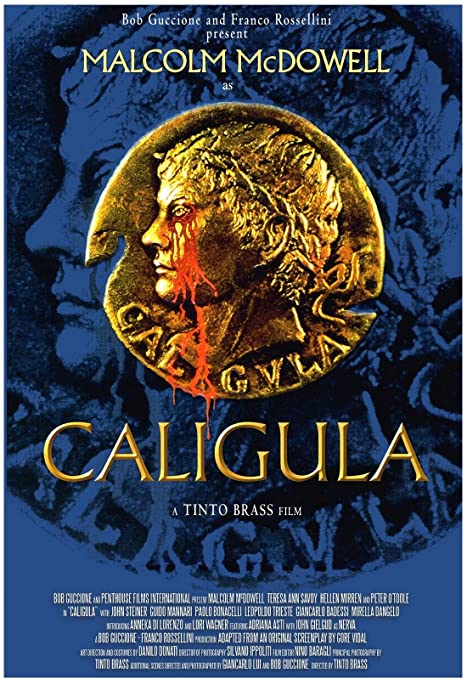
DG: Tell us a little about yourself and how you got involved in the project?
Thomas Negovan: I’ve had a gallery for twenty years called Century Guild, and a lot of what we do is archeological excavation related to artwork in terms of history, a lot of symbolist art, and things that are a little bit fringe, like Berlin cabaret related artists, things like that. When the new owners of Penthouse discovered this warehouse, they called me in to look at it and asked the question, “Is this good? Is this something we should be excited about?” And I felt like someone had taken me into the last scene of RAIDERS OF THE LOST ARK. I’m looking at these boxes and opening them, and there’s original proof sheets, cans with negatives, things that were still sealed from when they’d been filmed 40 years ago, audio interview tapes… my response to them was “Yes! Yes!” This was an unbelievable treasure trove. That’s how I came into it was as someone they just knew as someone who could look at things that were on the peculiar edge — we do a lot with silent cinema at my gallery — someone that could understand the convergence of art and cinema, and things that require archiving. So my introduction to it was very mundane but the result was completely the opposite. Not, “These are really great pictures of your grandfather, you should go have them scanned so you have them for your kids.” It wasn’t that. It was like finding the Ark of the Covenant. It was crazy.
DG: And you found something to the tune of 96 hours of footage in there…
THOMAS NEGOVAN: There’s just over 90. 96 hours were filmed, approximately. We’ve recovered in the 90th percentile of what was filmed. At this point it’s something like 91-92 hours of the footage.
DG: How radically different is what you’ve found from the different versions floating around out there? I mean I’m a completionist and I don’t think I’ve even seen all of the different cuts.
THOMAS NEGOVAN: What basically happened is when the movie was first released, [the studio] had their cut, and then different countries would have slight variations. Maybe this scene would be extended a little bit, or there’d be a couple extra minutes of sex put in for Italy, something like that. Every person was attempting to do a new version but all they were working with were the R-rated or unrated versions, and then other variants that no more than two or three minutes of variance. So the difference between that and what we have now is that the new version that we’re gonna have, which is probably going to be two-and-a-half hours — not one moment of anything anyone has ever seen before is going to be projected. If this clocks in at 140 minutes, it’s going to be 140 minutes of unseen footage.
DG: So this is a completely new cut.
THOMAS NEGOVAN: Completely from the ground up. What happened was, Gore Vidal wrote the script and envisioned a very austere, historically authentic film. And they partnered up with Andy Warhol’s camp, they got a director named Paul Morrisey, and Mick Jagger was going to play Caligula. They could not raise the funding, so they went to Bob Guccione. He said “I’m in, but those Warhol freaks are too strange. We need to find someone who can make this grander and bigger.” And they found Tinto Brass. As soon as Tinto Brass got on board, he started making it into this really extravagant version, and when Gore Vidal showed up on set he said it looked like the lobby of the Fontainebleau Hotel in Miami and was furious. Tinto Brass lost his mind, barred Gore from the set, and that was the first domino of the power struggle. Then Bob Guccione was biding his time and Tinto Brass was trying to make this art film, he was pulling people in off the streets as extras based on their dick size, he was hiring criminals to intermingle with the cast so they looked like a rougher lot; and meanwhile Bob was flying in Penthouse Pets to try and pepper the crowd with the western standard of beauty. As soon as Tinto finished principle photography, Bob fired him, then went back in to the set and filmed hardcore porn for a week. So when we talk about the different edits, what was happening was this kind of game of hot potato where there was no real editor on the film. That’s why when you look at the original credits it says “Edited by the Production.” The reason I’m giving you this longer answer is, when we talk about the different versions of the film, it wasn’t different people taking different cracks at the film, it’s that people were being given something and then being told, “You gotta shave three minutes off.” Literally each one was a hackjob. Moving forward, no one was ever accessing the original materials, and understandably, because it was such an unpleasant experience. There was no director, Gore Vidal had sued to remove his name from the film, and the only person to answer to was Bob Guccinoe, who had no idea how to make a film. So each editor was editing it like you would a porn. That’s why the plot doesn’t make any sense. Because there was no thought of narrative, it was just, “How do you make this feel like a big spectacle?”
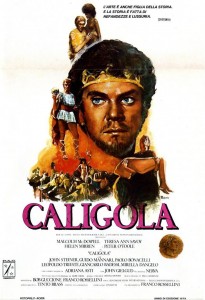
DG: How much of Vidal’s script was actually shot? What’s interesting to me is that all the stuff with Tiberius hews pretty closely to history, if you believe Suetonius’ account. Then as soon as Peter O’Toole leaves the movie, it goes off the rails and it feels like someone just started making stuff up, like spinning walls of death and such. Did they start out shooting his script and things went by the wayside?
THOMAS NEGOVAN: By the time they started filming, Malcolm McDowell and Tinto had gone into the script with a pair of scissors, and the pair of them were doing rewrites, restructuring, and by the time you got to set, the meat of Gore’s narrative was there, but — well, here’s an example. Tinto and Peter O’Toole very much did not get along. And so the day right before filming, there are lines drawn through entire pages of dialogue for Tiberius. It’s gut wrenching to me being a Peter O’Toole fan to see all this incredible dialogue and know that literally in the hours before they were going to film, they were “Skip it, skip it, skip it.” As far as the historical accuracy, I think that when you get to some of the things at the end, a lot of that is — according to Suetonious — accurate, but… when you get into a three-story-tall decapitation machine, and yet you keep hearing “What we’re striving for is historical accuracy!” That is very farcical.
DG: That’s what gets me, is, there’s so many small touches that show Vidal really did his homework. Like when Caligula is in Tiberius’ lair and there’s a little grotto with urns that never get addressed but the names on the grave markers are all really members of Tiberius’ family that predeceased him.
THOMAS NEGOVAN: That is a perfect example. That has a major part in Gore’s script! That’s how the movie opens! The movie opens with Caligula having a nightmare in which the death masks of his ancestors are laid out before him and he — in the dream — is at his father’s funeral. So when he wakes up with a start and says “he’s going to kill me,” he says that because he’s just lived the idea that to be the emperor is to die. The idea that in this lineage you are always being gunned for. It’s very THE GODFATHER. But instead what we have in the film is he’s fucking his sister in the woods and then he wakes up in bed with his sister like he had a nightmare. So literally, from the first scene of the film, you’ve already deviated so grossly from Gore’s script that it’s downhill from there. You never get it back. But it’s very astute to notice that and yes, that’s important and is something that’s part of the restoration.
DG: Was the nightmare actually shot?
THOMAS NEGOVAN: The dream scene was not shot. The thing we’re gonna try to do was the way they did the opening of SHADOW OF THE VAMPIRE. We’re looking at doing it with frescoes by torchlight through the opening credits. So you understand the lineage of death, of being come for. Instead of having this romantic idyll with mist and trees and then he wakes up like “Oh, I’m terrified!” it’s a little darker in the beginning. So then when he wakes up with a start you’re like, of course he’s having a nightmare, that was fucking terrifying. We’re trying to figure out how to honor Gore’s story and set things up so when you see those urns later you understand. There’s another huge thing—in his bedroom, he’s got his Little Boots costume. And at the end, his kid is wearing the Little Boots costume. In Gore Vidal’s script, the very first time we see Caligula he’s wearing that costume. So the idea you see it in the beginning, the middle, and then the end when his child is murdered, has a beautiful, horrific arc. That’s an example again of the kind of thing that was completely neglected in the version that was released.
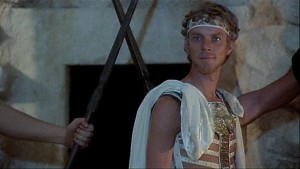
DG: How do you end up with 96 hours of footage and still have stuff missing, and how are you going to address the footage missing from Vidal’s script?
THOMAS NEGOVAN: When you get into the meat of the film, everything is there. The only thing that they didn’t film that makes you put your forehead down on your desk and think, “Oh my God, why didn’t you do this?” is that opening sequence. When it gets into the meat of it, it’s more emotional for me, in the sense that I could watch Peter O’Toole read the phone book and it would be entertaining. So when I see there are minutes of dialogue of his that were cut, I personally lament it. But it’s not necessary to keep. If you want the film to be under three hours it’s probably good they didn’t film it, because it’s already so much. And the material that pushes Caligula, that’s really where the meat is. There are seven scenes that were filmed that were never in any version anyone’s seen before, and those alone change the narrative immeasurably. They completely change the dynamic and arc of the character. McDowell has said for decades that what was released was a complete betrayal and that he stands behind the work he did. That’s a fine thing to say in interviews, but, now, having watched all ninety-some hours of this, he’s not lying! He made a fucking good movie. The performances that they chose to use were by no means the best performance. There was no editor to watch for the most subtle take, the most dynamic take. They were clearly just hacking it. In every scene, in every case, there’s a better take than the one they used. Not to mention the narrative! In the movie that’s released, in one scene, McDowell’s got this very dramatic expression on his face, and then they cut to two girls having sex, when in reality what he was reacting to was something relevant to the narrative. I can’t even begin to imagine what it must feel like for him. To have put a year of his life into this film and then have it be this albatross, this reminder of people fucking with you. And nobody was nice to each other. Bob Guccione was not a Malcolm McDowell fan, they didn’t like each other. They were slow on the paychecks throughout the production so he was going to work having to deal with that. Then on the other hand, McDowell wasn’t an angel either. He and Tinto had it in for Gore. So it was kind of like, it really was this viper’s nest of spiritually underdeveloped people. It was the perfect example of movie business, and none of it was good. The only person who appears to have emerged unscathed is Helen Mirren. I can’t find any record of her doing anything weird. Even Peter O’Toole, who I love, was late to set every day. When they needed him to do his ADR he chased them off with a shotgun! If you wrote this like a Danny McBride TV show you would think it was too crazy.
DG: Have there been any big surprises you’ve come across?
THOMAS NEGOVAN: The entire context of the character change, the entire context of the narrative! Caligula was not just a goofy madman, which is the way it’s portrayed in the film. There’s a scene where he walks through the Senate House where it’s completely empty, and he’s tracing his finger across the sigils and trappings of Rome, and he’s looking out over the empty senate and he knows they’re going to kill him. And a single tear rolls down his cheek. The idea is that what he was trying to do was invigorate Rome. He was anarchistic, it was really meant to be revolutionary and not that he’s just loopy. There’s a point in the film where he and his wife, Caesonia, played by Helen Mirren, are having a conversation and he basically says, “I’m trying to shake things up,” and she says to him, “I know that, but do you have to be so painfully obvious?” And that conversation where they’re verbally addressing what he’s doing and why is not in the film that’s released. There’s these elements that reveal there’s an arc to the character that isn’t literally “scandalous young man turns into crazy person”—which is what we got in 1980. That’s not what was written, that’s certainly not what was filmed, and it’s certainly not what Malcolm McDowell performed. So more than anybody in this equation the person we’re most trying to respect with this is Malcolm McDowell, and the fact he delivered this really dynamic character arc no one ever got to see. It was edited like America’s Funniest Home Videos. There should be Benny Hill music!
DG: Yakkety Sax.
Thomas Negovan: Exactly! He’s looking at something really serious, thinking about the death of his sister, then they cut to two Penthouse Pets having sex by candlelight!? It makes no sense! None of it makes any sense compared to what McDowell was delivering in his performance. Here’s another one, a personal favorite that doesn’t really help the narrative but it’s an interesting point. There’s a part where Caligula is being mischievous and he cuts a cord and a fabric ceiling lowers onto the senators. And the senators are just in crazy disarray. And in the film, as it’s been released, it pans up to the right and you see that Caesonia is watching. In the original negative, the camera lingers on her. There’s another good ten seconds where it moves up to her and she lifts her chin up and laughs. It’s so Shakespearean to see her not just approving but celebratory of his mischief. In that moment I’m thinking, “I’m watching one of the greatest actors in history something nobody has seen since it happened on set forty years ago.” That was my first big moment. I must have watched Helen Mirren lift her chin and laugh like thirty times. It was like being at Guitar Center and seeing Kirk Hammett and then he does a little blues riff! It was just a little riff she did, but, I was like, holy fuck man. She’s into it so deep and she delivers it so hard but no one has ever seen it! What we’re really excited about is people are gonna get to see moments no one has ever seen with actors like Peter O’Toole, John Gielguld, Malcolm McDowell, and Helen Mirren. So many small moments like that, that’re just very actory moments where if you’re a fan of performing or cinema or even just storytelling, they’re gonna be really rewarding.
DG: Speaking of things no one’s ever seen, let’s talk about the photography/making-of book…
THOMAS NEGOVAN: The thing about that as it relates to the book, the thing the book does that’s a little different is, the way everything was filmed is they did a three camera setup. So three cameras were filming at all times, so those sets were like a stage play. You’ve got a center, you’ve got a diagonal left, a diagonal right. So the thing about looking at the set photos is, you’re seeing things like the big decapitation machine down from the right, places the film cameras never went. Or the behind the scenes where they’re putting on the makeup for Tiberius’ harem. I had no idea because they only show them for like two seconds but they were gluing penises onto women to make hermaphrodites! They’re doing prosthetics! I’ve seen the movie and I didn’t realize there was someone with three eyes and two faces. The idea was that Tiberius had assembled a collection of strangeness to make a collection of human statues. I don’t want to take away from the film, but the book is meant to be the addendum to that. The new version of the film repairs the story; but we found 11,000 photos taken on the set of the film. And in those photos, you’re seeing some of the subtle tension. The days different people showed up on set. You’re also seeing that very famous part of moviemaking which is just waiting. There are photos that are just Helen Mirren sitting holding a camera in her lap, or her peeking through the lens of a film camera like Tinto saying, “Go look at the shot.” To me, that’s so exciting, because Malcolm McDowell and Helen Mirren especially, we think of them as these larger than life characters, and it’s super cool to see them wrapped in their 1970s stitched blankets, smoking cigarettes and drinking coffee while wearing a Roman headdress! It’s very humanizing and super interesting.
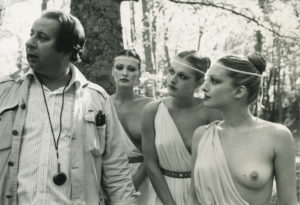
DG: What’s been the process of assembling this cut, and do you have a projected release date?
THOMAS NEGOVAN: We don’t have a projected release date. The process has been the same as if this was a movie filmed yesterday: digitize the film, review the film, sort everything out, pull the best scenes, get them into an edit. Getting the audio and music in shape. I personally am chomping at the bit to be able to make some public statements that I’m not able to. Soon is not soon enough for me. But I’m hoping COVID isn’t going to be an issue anymore and it’s something people are going to get to see this year. Part of the book is almost meant to be like an appetizer, something to get out there in the world, let people start hearing some of the stories I’m telling you and getting people excited that this thing is going to be coming out, giving people some context when it’s time to get to experience it.
DG: When is the book scheduled for release?
THOMAS NEGOVAN: The way the publishing stuff works is, we don’t have a set release date, but it’s supposed to be sometime in November. The way this works with the crowd funding is, if you preorder it, you get like 15-20% off, and then you also get the opportunity to get things that wouldn’t be available otherwise. Like we’re reproducing some of the photos from the archive, and you can only get them in Kickstarter. And then there’s slipcase and clamshell editions. One thing we did — and this is coming from me being a film superfan — we had one segment of thirty frames of Malcolm McDowell’s eyes. We made an edition of 24 with a clamshell where we’re actually putting one of those frames in each. It’s just meant to be like this weird, crazy idea of the tangible element — that negative was on set that day rolling through the camera while he was staring directly at the lens. I’m a huge film fan, I know not everyone feels that hocus pocusy about it, but I do, and it’s meant to be one of those things that, if you’re one of those kinds of people, how do you share that, what it’s like to touch a piece of the archives.
DG: I thought it was cool you reproduced the bloody coin from the opening.
THOMAS NEGOVAN: We made those for LA Art. We had an exhibition of photos at LA Art right when COVID hit. That was the last big event in LA before everything got shut down, and I remember being at that show and hearing people talking about “Oh, have you heard, people are getting sick over in England and China!” That was meant to be our first promotional item that would’ve kicked off a year of events, and obviously they all had to be canceled. But the coin was fun to make. The way we did the blood is it’s enamel, so the blood looks like it’s got a visceral glistening.
DG: That’s so awesome.
THOMAS NEGOVAN: Yeah! Because part of the thing is, how do you utilize the materials? When they had done the first mockup and they had the blood kinda carved in, I was, “No! It’s got to look like blood!” Running an art gallery for over twenty years I’m very aware of the differences between manufacturers and designers and pushing things to really get the most out of it. I was really happy with it, I allowed myself a little pat on the back that it was really clever. I’ve always loved making promotional things. To me that’s the most fun part of working with any property. It’s like when Guillermo del Toro for SHAPE OF WATER made those things that looked like they were from the laboratory, things you could never sell in a store en masse because people wouldn’t necessarily get it, but which for a fan is super cool. I know people who have them that carry them around as a good luck charm. I’m like, “Well, don’t get killed!” That’s an example of the perfect thing for a Kickstarter. You could never sell enough of them retail for it to make sense but for this, we’ve gotta do it. It’s too cool.
DG: Last question, and this is just something I’ve got to know… where the hell did the spinning wall of death come from? Like, who came up with that?
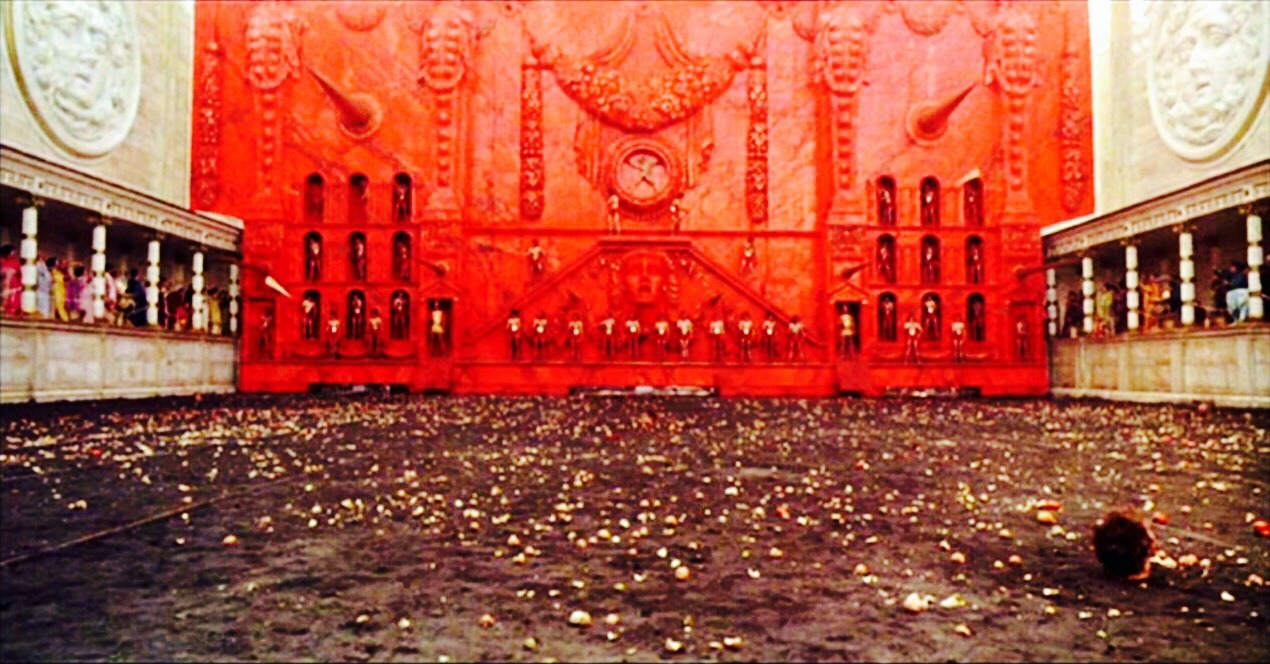
THOMAS NEGOVAN: It’s funny you should ask that because it’s something I’ve been really digging into in the last week. The answer is I’m not sure at this moment. It stands out as being one of the most absurd additions. I can give you a guess, I can tell you what I’m speculating, but it could prove to be wrong in three weeks. Danilo Donati, the set designer, very famously did not read the scripts of the movies he worked on. So when they showed up to film CALIGULA there were entire sets they didn’t use, because they didn’t fit any part of the narrative. You gotta remember, the guy who did these sets also did the sets for FLASH GORDON, and they had the exact same problem. They showed up to make the movie and half the sets they needed didn’t exist and another half they had to rewrite the scenes to fit into. I feel like that avenue is going to give me some information but I’m actually right now writing the part of the book about the wall. That’s the other thing, a lot of these things you’re asking are going to be in the book. Maybe there’s your pitch: if you want the answers, you’ve got to get the book! I’ve been talking to people who were on set and trying to piece together some of the mysteries. But it’s a good question — I have the same one! It’s fucking crazy!
DG: Right? There’s this really jarring contrast between the subtle historical touches, that the same movie that’s got the Drusus urn or the scene where Caligula talks about going bald that’re culled directly from history, these very little things, and then boom, wall of death.
THOMAS NEGOVAN: I’d like to say it was drugs! I will say that for every question I’m able to answer it creates three new questions. Even going through the photos. We’re going to have 200 but the higher the Kickstarter goes the more we’ll increase the page count. I’ve been pulling some thinking “Okay, say we can put in another 16 pages, what should we put?” And I’m finding even more things I didn’t know. There’s photos of Isabella Rossellini on set. Weird little historical moments that to me seem super-fascinated. Maria Schneider had been cast as Caligula’s sister, and then she quit. I just found the single photo of her that was taken on set. No one’s ever seen it before. I literally just found it four days ago. Stuff like that. If you’re a film nerd, everyone’s talked about the fact that Maria Schneider famously walked off the set of CALIGULA. No one believed it wasn’t true but no one’s ever seen a photo of her on set before. And it was in there with 11,000 photos! Supporting the book basically dictates the course of the academic part. The movie’s coming out no matter what, but the more support the book gets, the more work I can put into making these weird points of historical detail available to the public.
Find out more about the Century Guild here!

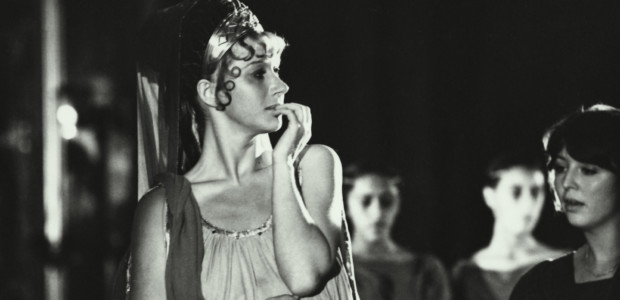
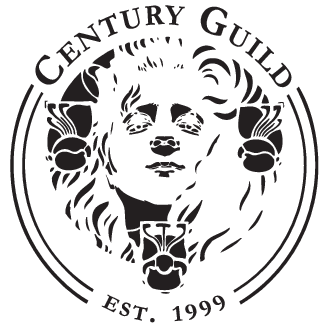
No Comments